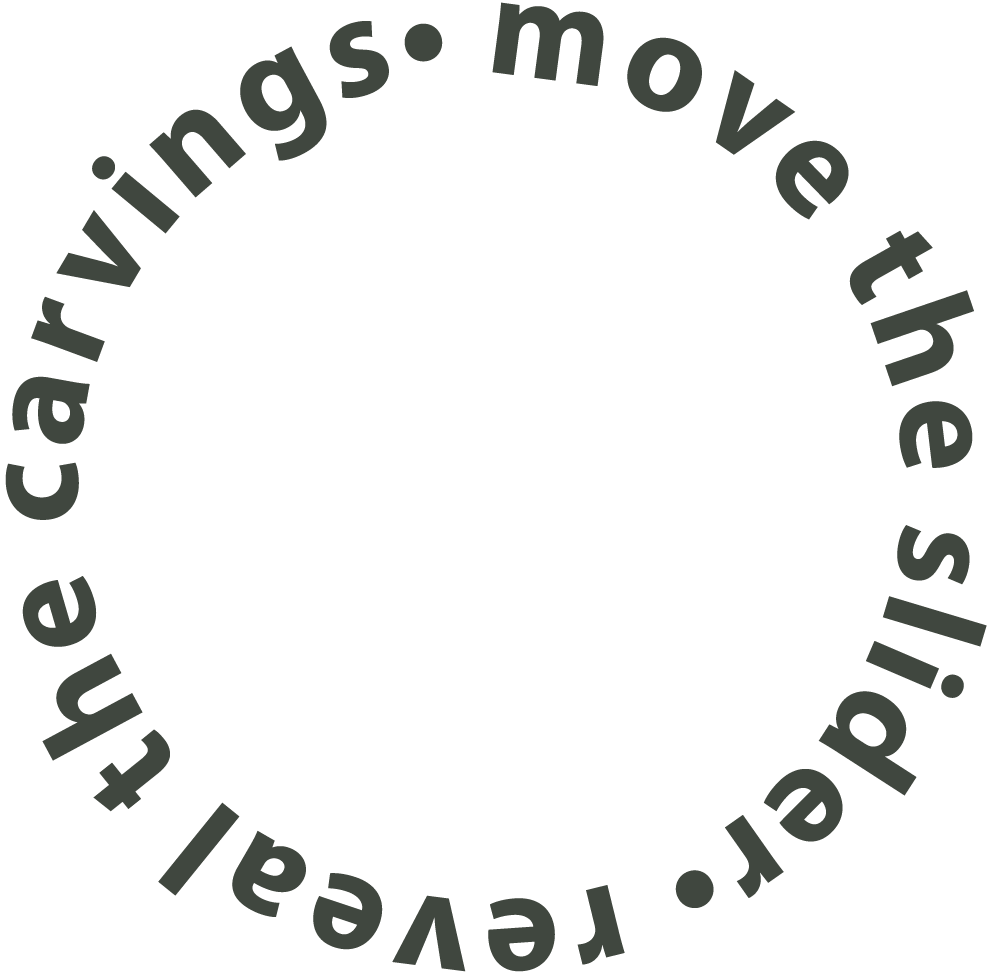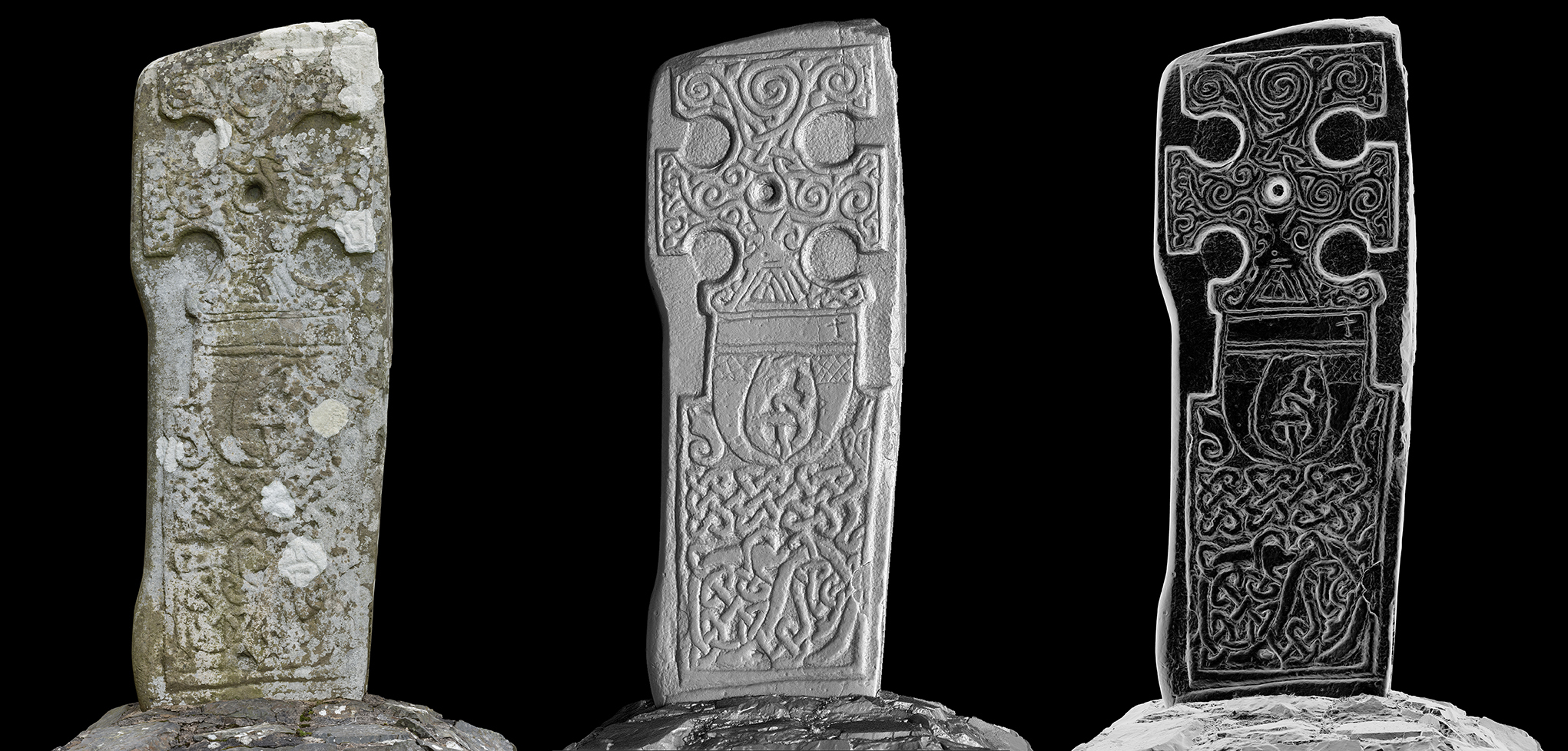In February 2021, as a part of the Rhins Revealed Project, we were delighted to welcome Prof. Carol Neuman de Vegvar of Ohio Wesleyan University in giving a talk via Zoom on the significance of the imagery of the Kilmorie Stone.
Carol is an art historian with a focus on early medieval western art. She was intrigued by the curious presence of what appear to be drinking horns on the Kilmorie Stone, leading her to delve deeper into the stone’s symbolism. We are very grateful to Carol for sharing her thoughts with us, which are summarised briefly below.
The Kilmorie Stone
The Kilmorie Stone stands in the churchyard of the early Kirkcolm Church in the north Rhins of Galloway.
The name Kirkcolm evokes a church dedicated to either St Columba or, more probably, his successor Cuimín, and is one of several Irish saint dedications in the area.
The cross has been in its current location only since 1989. It stood originally at Saint Mary’s Chapel in Kilmorie, south of Kirkcolm. By the early 18th century, the chapel at Kilmorie was in ruins. When the parish church at Kirkcolm was restored in the early 18th century, the cross-slab was removed from Kilmorie and re-used as the lintel of the west doorway at Kirkcolm.
In 1821 the church at Kirkcolm in turn was demolished and the cross-slab was moved to the grounds of Corsewall House, northeast of Kirkcolm. In 1989, the cross-slab was moved to its current location at Kirkcolm Church.
The stone stands 1.7m tall and is carved on both sides. The sculpture of the Kilmorie cross-slab has been variously dated in the 9th and 10th century and has variously been called early medieval, Pictish, or Viking. However, the two sides of the cross are quite different in style and technique, and it is likely that they were carved by different people, at different times.
Kilmorie Stone at the Kirkcolm churchyard in the north Rhins of Galloway



decipher the carvings⚬
decipher the carvings⚬
decipher the carvings⚬
decipher the carvings⚬
decipher the carvings⚬

More Thoughts on the Drinking Horns
An unresolved puzzle in the Kilmorie reliefs is the presence of the two horns on the altar.
The late 10th or early 11th century Anderson Pontifical uses the Old English term “æmte winhorn” or “empty drinking horn” in referring to the wine cruet to be used in the preparation of the chalice, an object which might come to rest on the altar in the course of the liturgy.
Drinking horns as valuables were sometimes also given to the church as gifts by powerful people. For example, Witlaf, King of Mercia in the early 9th century, gave a drinking horn to the Abbey of Crowland for use by senior monks on feast days. Horns given to the church were sometimes displayed on the altar.
The imagery on the Kilmorie cross-slab may thus be intended to commemorate a gift or gifts of horns, and perhaps also of associated lands to the church.
The context of drinking horns in comparable early medieval sculpture in Scotland and further afield provides a wide range of possible meanings, ranging from the biblical, to the lives of Saints, to the mythological, to the honouring of powerful people.
In many of these contexts, drinking horns are held by or offered to secular leaders, whether biblical or contemporary, and are associated with the context of high-status feasting and reciprocal gift-giving. In this context, the drinking horns on the Kilmorie stone may well allude to exchange of gifts and formally recognised friendship between Kirkmadrine or Kilmorie itself and the secular community of the Rhins or donors further afield.
Whether they represent actual horns that were given to and preserved at either ecclesiastical site and perhaps displayed there prominently on the altar, or are instead symbolic, is lost in the mists of history.
The cross has been in its current location only since 1989. It stood originally at Saint Mary’s Chapel in Kilmorie, south of Kirkcolm. By the early 18th century, the chapel at Kilmorie was in ruins. When the parish church at Kirkcolm was restored in the early 18th century, the cross-slab was removed from Kilmorie and re-used as the lintel of the west doorway at Kirkcolm.
Further information
More information about the Kilmorie stones can be found in the Kilmorie Chapel entry on Canmore
Interested in other stones?
Manx National Heritage have all their crosses available to examine in 3D on Sketchfab. Read about the heroes and iconography of Norse mythology on their website.
Kirkby Stephen Parish Church has a page about their Loki stone.



